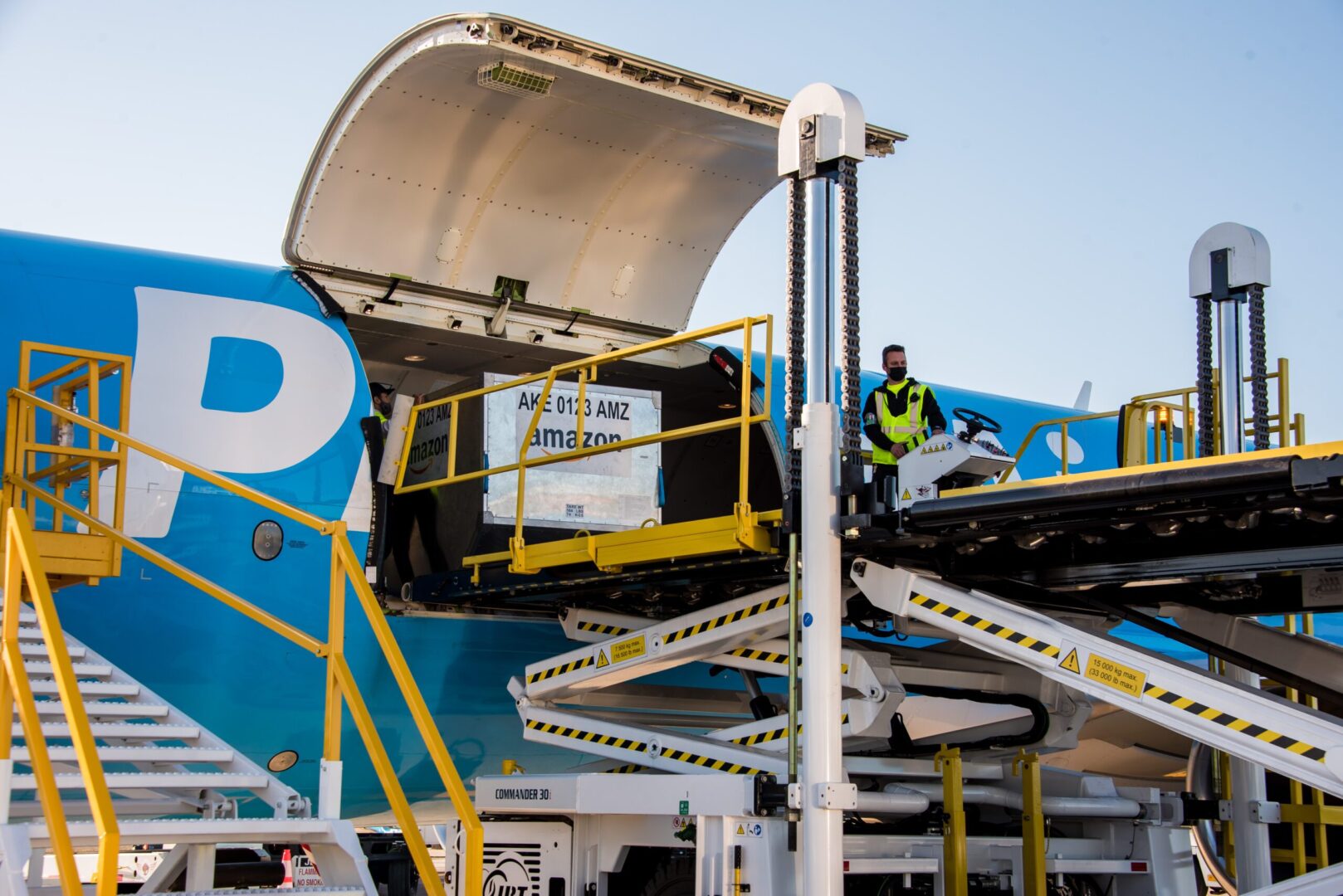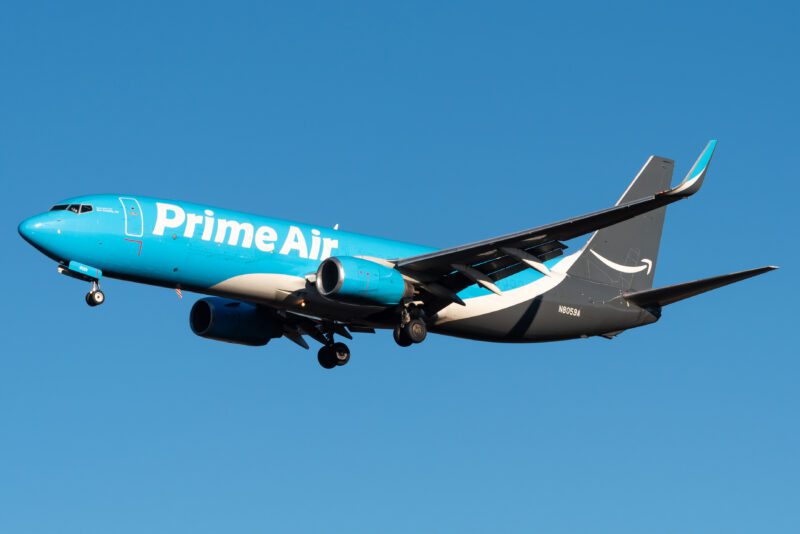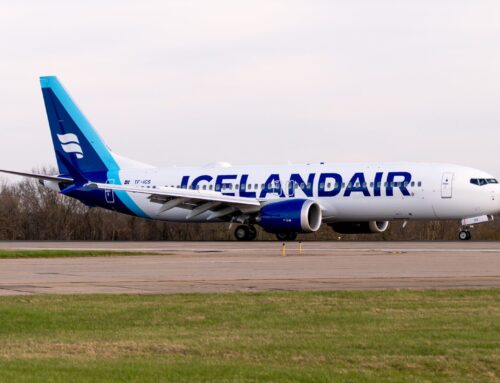Cargo at PIT Benefits from Online Shopping Surge
Airport’s new facility set to handle continued growth in e-commerce
By Kevan Hoffman
Published March 4, 2024
Read Time: 4 mins

The modern new terminal rising at Pittsburgh International Airport may get the lion’s share of attention, but there’s another major construction project that will generate jobs and economic growth throughout Western Pennsylvania.
PIT’s new 77,000-square foot cargo facility, dubbed Cargo 4, will create much-needed space for expansion when it opens for business late this year.
The airport’s overall cargo business has increased in recent years, driven in large part by the remarkable rise in e-commerce, or online shopping. According to Morgan Stanley, the global e-commerce market is expected to grow from $3.3 trillion today to $5.4 trillion by 2026, when it will represent 27 percent of total retail sales.
With millions of shipments sent each day, and consumers’ expectation of fast delivery times, e-commerce is a critical market segment for the air cargo industry.
“The explosive growth of Shein and Temu in the U.S. market has been a key driver of trans-Pacific air cargo demand growth in the last couple of years,” said David Hoppin of Seabury Airline Strategy Group.

Construction progress of PIT’s new 77,000-square foot Cargo 4 scheduled to open in 2024. (Photo by Beth Hollerich)
Game changer
Back in the 1960s, a few large companies set up “electronic data interchange” links to allow vendors to submit bids and customers to place orders, as a precursor to the Internet, which was commercialized in the late 1980s and early 1990s. Full-scale internet shopping followed. E-commerce had arrived.
The rise of powerhouses like Amazon, eBay and Shopify have solidified e-commerce as a part of everyday life. Traditional brick-and-mortar retailers are also capitalizing on the popularity of e-commerce, with Walmart reporting that online sales now account for about 15 percent of its total revenue.
During the COVID-19 pandemic, as consumers spent significantly more time at home, e-commerce saw a period of massively accelerated growth.
The International Air Transport Association (IATA) reported that 52 percent of consumers increased their online shopping during the pandemic, and experts say that growth will continue.
“We believe that the COVID-driven bump will not flatten future e-commerce growth,” said Brian Nowak, an equity analyst with Morgan Stanley.
Airports across the country are benefiting from increased air cargo volume.
The rise of e-commerce, led by Amazon, “has led to a lot of [U.S.] airports, quite frankly, that were not necessarily relevant to air cargo beyond FedEx and UPS operations to all of a sudden have some relevance and success in air cargo,” said Doug Bañez, managing director of Hubpoint Strategic Advisors, a Charlotte, N.C.-based consultancy specializing in aviation, transportation and logistics.
E-commerce shipments now comprise around 20 percent of the air cargo industry and a remarkable 80 percent of cross-border e-comm shipments are now traveling by air, according to IATA research.
“Because of e-commerce…there’s definitely a shift that is structural, that is permanent,” Craig Smyth, former chief executive of Worldwide Flight Services, said last year.
Amazon, which last year delivered an estimated 6 billion packages in the U.S., has created its own in-house package delivery network – Amazon Logistics – and an air transportation component, Amazon Air.
Outside of the U.S., Lufthansa is building an intra-European cargo network geared towards e-commerce shipments and designed to “establish Lufthansa Cargo as the leading European cargo airline and service partner in the market,” according to Chief Executive Officer Ashwin Bhat.

An Amazon Air 737-800 comes in to land at PIT from Lakeland, Fla., on Feb. 3, 2024. (Photo by Evan Dougherty)
Advantage Pittsburgh
With its new cargo facility, Pittsburgh is well-positioned to grow e-commerce traffic as the airport’s location and adjacent interstate highway system provide efficient access to the East Coast, Midwest, and into eastern Canada.
More than half of the U.S. and Canadian buying power is located within an eight-hour truck drive of Pittsburgh. Pittsburgh is also home to a United States Postal Service Network Distribution Center (NDC), one of about 20 in the country, for simplified induction of pre-labeled e-commerce packages into the postal service’s network.
Additionally, Pittsburgh International Airport has around-the-clock U.S. customs availability to rapidly clear inbound shipments, a sustainable and resilient microgrid that reduces emissions, and an existing base of trained local workers.
“This is an exciting time for the cargo business at PIT specifically and in the overall industry,” said Joe Rotterdam, PIT’s Director, Air Service Development. “Consumer habits have changed dramatically in recent years, and the potential for growth from online shopping is incredible. PIT is well-positioned to capitalize on this continued growth.”






